Matador Network's Blog, page 126
September 4, 2024
The Standard Hotel in Miami Beach Is Going All in on ‘Sextember’ With Game Nights, Shibari Drawing, and More

Let’s talk about sex, and let’s do so in a welcoming and safe environment is the message from The Standard, Miami Beach, as they build on the success of previous years of its month-long packed roster of programs and workshops for Sextember. To celebrate Sexual Awareness Month, this September’s event is designed to challenge societal taboos, promote open dialogue about sexuality, and foster a supportive community.
“As an adults-only property, we’ve noticed a growing interest among our members in exploring sexual health topics,” explains a spokesperson for The Standard. “We believe that by approaching these subjects with positivity and playfulness, we can create a more inclusive and empowering environment for everyone.”
Sextember will feature a diverse range of workshops, panels, and events, all centered around the theme of sexual health, wellness, and empowerment. From tantric experiences to anal pleasure workshops to comedy nights, all guests (adults 21 and older) are welcome, and there’s sure to be something that tickles your fancy or intrigue.

Photo: The Standard Spa, Miami Beach
Hosted by The Standard Spa, some of the ticketed events include access to the spa’s indoor baths, but you might want to make a weekend of it and couple a workshop with a stay and visit to the oceanfront wellness center, which is one of Miami’s finest.
 Photo: The Standard Spa, Miami Beach
Photo: The Standard Spa, Miami Beach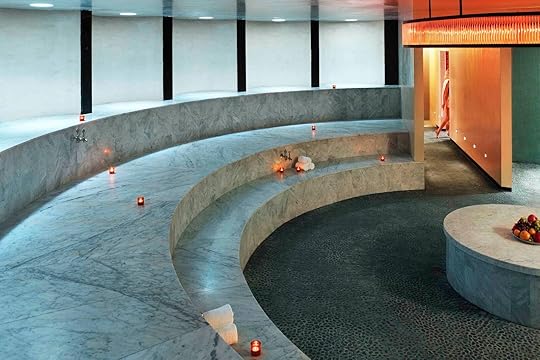 Photo: The Standard Spa, Miami Beach
Photo: The Standard Spa, Miami Beach Photo: The Standard Spa, Miami Beach
Photo: The Standard Spa, Miami Beach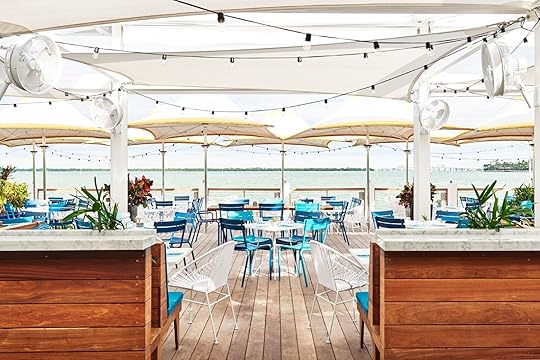 Photo: The Standard Spa, Miami Beach
Photo: The Standard Spa, Miami BeachSextember’s hottest ticket is the “Soulgasm: A Tantric Experience” workshop on September 7. This heart-opening session connects participants to their most powerful, creative, healing energy. Led by experienced practitioners, the workshop incorporates unique techniques to foster intimacy, connection, and self-love.
Tantric and organism workshops are becoming more widely available. Many are online, which is excellent for those who live in more rural areas, but attending a program in person will likely be a more fulfilling experience. These workshops aim to help build confidence by helping people understand they don’t have to fit into a single model of desire.
This will be the third year The Standard has run the event, which started after Standard members showed interest in the spa’s tantra workshops. However, this year’s Sextember is the first time many workshops are open to the public.
“There are still a lot of stigmas around sexual health, so putting our Standard spin on the month-long workshops was important for us to open the dialogue and eliminate any taboo no matter your sexuality,” says The Standard.
On September 20, you can sign up for the “Secrets to Sensational Intimacy” workshop. This has been designed to enhance erotic intelligence and sexual self-awareness. Led by well-known sex and intimacy coach Ally Jewel, this session explores the art of arousal, the mastery of touch skills, and effective communication. The session costs $75 and includes access to the spa’s indoor baths.
If you’d like to visit The Standard as a couple and deepen your relationship, there’s a personalized session, “Sextology: Couple’s Compatibility Astrology,” which explores each partner’s energetic signature and how they interact to create a harmonious or challenging relationship. This event is by appointment only and is available throughout the month.
Check out the event’s page for a full calendar of events. 
September 3, 2024
The Best Way to Get From NYC to Atlantic City? A Blade Helicopter Straight to a Luxury Casino

I am a diehard fan of The Sopranos, Boardwalk Empire, Bon Jovi, and Bruce Springsteen. Needless to say, when I moved to New York City from Texas a few years ago, I had to visit Atlantic City. Getting there from Brooklyn without a set of wheels was logistically complicated, but when Blade, a short-distance flight company in New York City founded in 2014, started a helicopter route from Hudson Yards directly to Ocean Casino Resort, I knew my time had come.
Originally catering to high-rolling Manhattanites with helicopter transfers to the airport and jet, helicopter, and seaplane routes to the Hamptons, Blade partnered with Ocean Casino Resort in 2024 to expand farther afield. Chopper rides to Atlantic City cost $800 round-trip, but the package also includes a suite for the weekend at the Ocean Casino Resort, the crème de la crème of hotel-casinos in Atlantic City. The flight was a splurge for me, a semi-employed writer, but I figured my winnings at the tables would balance out the books. Yessir, for all the bread I was about to make, well, there ain’t enough yeast in the world, baby.
As with Vegas, Disney, and Times Square, a weekend is just the right amount of time to spend in Atlantic City. I recommend splitting your time between enjoying the revelry, casinos, and restaurants of Ocean Casino Resort and exploring the town — one of the most historic on the Eastern Seaboard.
Flying with Blade
Photo: Johnny Motley
Driving to Atlantic City takes three hours, give or take, from New York City, but the Blade helicopter ride takes only 50 minutes. There’s no real threat of traffic jams in the air. And the surreal aerial views — Manhattan’s skyline, the Jersey Shore, and Atlantic City’s boardwalk all seen from 10,000 feet — are appealing on their own.
Blade choppers to Atlantic City depart from two locations on the island: West 30th St., near Hudson Yards, and East 34th St. in Midtown. Unlike plane travel, Blade’s boarding process is a breeze: no TSA rigamarole, no baggage claim waits, and none of the general unpleasantness of being in an airport. After emailing Blade my weight (important data for the flight), I arrived at the heliport 15 minutes before take-off and drank a complimentary San Pellegrino while gazing across the Hudson River. At noon, a sharp, German-accented command from the pilot — “Get to the chopper!” — broke my reverie. A few minutes later, we were soaring above Gotham’s concrete canyons.
I have acrophobia (fear of heights) and this was my first time in a helicopter, but the ride was pure pleasure. Floating at eye level with the tips of Midtown and the Financial District’s towers, I took better photographs than I could have with my DJI drone.
As we flew south, I chatted through aviation headphones with the pilot and Andrey, a 300-pound ex-Soviet who joined me for the weekend. The pilot explained that the chopper, a Bell 407, retailed for $5 million.
As Jersey’s salt marshes and barrier islands yielded to Atlantic City’s iconic oceanfront, we touched down on the rooftop of Ocean Casino Resort. I grabbed my bag, thanked the pilot, and made a rooftop oblation to Daikokuten, the Japanese god of prosperity and fortune popular with gamblers.
Landing in Atlantic City
Photo: Ocean Casino Resort
In its heyday in the Roaring Twenties, Atlantic City was Nantucket and Miami combined, a glittering seaside Shangri-La graced by Frank Sinatra, Babe Ruth, and New York City’s rich, famous, and beautiful. Fun fact: the streets and buildings of the Monopoly play board are based on Atlantic City. A number of factors led to a long, slow tourism decline and economic headwinds following World War II. The interstate highway system and commercial jets made for easier travel to farther destinations, for one, and urban flight led to less investment in the city.
And then came a possible solution: legalized gambling. The first casino opened in 1978 and a flood of others followed, bolstering the economy and drawing an unprecedented number of visitors. Tourist numbers went from about 700,000 people in 1978 to more than 33 million a decade later.
Atlantic City’s prosperity rose and fell repeatedly over the following decades. It’s safe to say the city’s star is on the rise again, and its magnificent architecture remains as a testament to a Golden Age of yore.

Photo: Johnny Motley
Take a taxi from Ocean Casino Resort to Irish Pub Inn, hands-down one of the best Hibernian public houses in America. The bar has a commendable selection of fine Irish whiskeys, and the bartenders pour Guinness well enough to pass muster in Dublin.
The Boardwalk, a raised wooden walkway tracing the coast, is emblematic of Atlantic City, and a lazy stroll past the arcades, casinos, and buskers is a delightful way to imbibe the vintage Americana charm of “America’s Playground.”
White House Subs serves cold-cut-laden, oblong sandwiches approaching the Platonic ideal of a Jersey hoagie. The magic is in the bread, which arrives fresh daily from a local Italian bakery. Noshing on a sub — sorry, a hoagie — on a beach bench is by itself worth the trip to South Jersey.
Fear & Loathing at Ocean Casino ResortAt some point during the weekend, I gave Andrey half of my cash as a safeguard against my worst impulses. My instructions were clear: “Don’t give this back to me, under any circumstances, until we’re back in New York.” But now it was 3 AM on Saturday, our last night, and I was down big. Lower than a snail’s belly button.
I left the blackjack table and found Andrey at the dollar slots. “Andrey, give me back my money. Right now.” He swung around in his chair, his eyes bulging with rage. “You miserable rat!” he snarled in his heavy accent. “You bought Cristal Champagne bottle for women at bar with company expense account! Your money was not enough for even half of cost!” I had, in fact, operated under the assumption that said expense account would absorb such incidentals. By now his shouts — sonic booms of Russian curses flecked with airborne spittle — were drawing attention from security. I skulked away in despair.
Panic rippled through my nervous system as my mind raced. How did fortune take such a cruel turn? Did I need to call my bank, my mom, or my priest first thing tomorrow? Would plasma centers still be open at this hour? I tried to calm myself down by thinking of the highlights of the weekend, which, prior to financial ruin, had gone swimmingly.

Photo: Johnny Motley
There was the luxury poolside cabana we booked after checking into our suites at Ocean Casino Resort. In our air-conditioned canopy, we drained Seed Beer IPAs and ate shrimp cocktails while soaking up views of the ocean and the Atlantic City Ferris Wheel. There was an epic dinner at Ocean Steak, a feast that would have made Frank Sinatra giddy: charred porterhouses, a platter of oysters, and a bottle of Napa Valley cabernet sauvignon. Then, a concert by America, an underrated classic rock band, at Ovation Hall.
But, alas, after all the carefree fun came that doomed decision to storm the casino one last time.
I lit a Pall Mall, and a scene flashed through my mind: the cast of Jersey Shore, regulars at the Ocean Casino Resort, drinking at 1927 Lounge, a cocktail bar on the property. A wild idea began to take shape and I knew exactly what to do. I would find Snooki.
Like a fever dream, I started to play out an alternate future. Snooki would bring me luck at the blackjack table. I would earn enough to live in the Presidential Suite at the Ocean Casino Resort, and catch rock shows from the likes of Lynyrd Skynyrd and Shinedown at Ovation Hall. Boardwalk strolls at sunset, no second guessing expensive drinks at 1927 Lounge. I’d play blackjack, but never for serious money, and I’d toss winnings to dealers who nicknamed me Cowboy.
Every two weeks in the summer months, I would take Blade back to New York City to check my mailbox and water my plants.
It wasn’t meant to be. Blade’s summer helicopter schedule between NYC and Atlantic City, however, is a blessed reality for a city getaway unlike any other. 
The National Park Service Just Got $100 Million to Combat Overtourism. But Is It Enough?

Some tourist attractions in the United States can be pretty expensive — looking at you, Disney World. But if you’ve ever visited a national park, you probably realized that they’re pretty affordable. Some parks are always free, while others charge about $20-35 for week-long pass. An annual pass for admission to every site managed by the National Park Service (NPS) is only $90 per year (or free, if there’s a veteran or fourth-grader in the family).
That’s because national parks in the United States are primarily funded through federal government appropriations. Each year, Congress allocates funds to the NPS as part of the federal budget process. In 2023, the NPS received approximately $3.3 billion in federal appropriations, which covered operational costs, staffing, conservation efforts, and maintenance. National parks also get revenue from visitor fees and concessions, but they actually generate more revenue for the government than they get back, according to the former NPS director.

National park gift shops are only a very small source of park operating fees. Photo: NPS/Public domain
So when the park service gets a significant grant from a private organization, like the recent donation from the Lilly Endowment, Inc., it’s a big deal. And it’s an especially big deal when that grant is for $100 million — the largest grant in the history of the US National Park Service.
The news came on August 26, with the note that funds would be spread throughout the more than 400 sites managed by the park service. An announcement from the National Parks Foundation (the official fundraising partner of the NPS) announced soonafter that the grant will used in four key priority areas. And three of the four relate to saving the parks from overtourism. The $100 million park grant will go inspiring park stewards of the future, protecting threatened wildlife and ecosystems, improving the visitor experience, and telling a more complete story of America.

In many ways, visitor behavior has improved at parks in recent times, as seen in this photo from Yosemite, likely circa 1940. The problem now is that there are just so many more guests in national parks today. Photo: NPS/Yosemite National Park Archives
Tourism to national parks has been through the roof in recent years, with parks like Yellowstone, Yosemite, and Great Smoky Mountains on track for one of their highest-attendance years ever. While few people will find fault with encouraging Americans to spend more time outdoors, it’s become clear that many visitors don’t know how to safely and sustainably recreate outside. As a result, parks across the US have seen increases in intentionally and unintentionally stupid and damaging behavior, from visitors scaring wildlife in Wyoming to trespassing on closed trails in Maine to chopping down endangered Joshua trees in California.
All the messaging in the world on how to Leave No Trace, practicing low-impact hiking, and even how to poop outdoors can’t stop damage from overvisitation, it seems. And while it’s nice that the grant funds will mirror the mission of the National Park Service (“The National Park Service preserves unimpaired the natural and cultural resources and values of the National Park System for the enjoyment, education, and inspiration of this and future generations,”) anyone who enjoys national parks can and should take a few simple steps to help that $100 million go as far as possible.
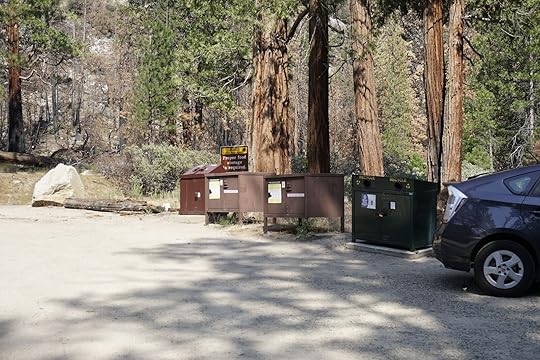
Bear bins are for all guests (yes, including you). Knowing how and when to use them can help keep bears alive and wild. Photo: NPS/Public Domain
Part of the grant will be used to “inspire the next generation of park stewards.” It’s important that all children and first-time visitors to national parks learn to love and respect them. But for people who have access to green spaces and parks near their homes, teaching children to respect and love the natural environment before setting foot in a national park can be a great way to make sure they know the basics of Leave No Trace recreation from a young age. That would allow the park service to spend this part of the money on efforts to teach proactive protection — for example, how to leave parks better than you found them — rather than spending money to correct basic behavior people should know from a young age, like not littering.
Without a doubt, the funds spent to “conserve and preserve threatened parks and wildlife” are essential. However, human activity is part of the reason some ecosystems are at risk, from activities like disturbing birds’ nesting sites, walking on fragile protected areas, and introducing microplastics, chemicals, and CO2 into park environments (not to mention the effects of climate change that aren’t localized to a single park). The funds from the $100 million park grant to help wildlife will stretch as far as possible if we as visitors begin to do a better job of respecting wildlife and giving them space to thrive. Fortunately, all it takes is 10 minutes of learning and research to know what to expect at each park before you go. Read the “Plan Your Visit” page available on every national park website, where it highlights the key things guests should know before visiting.

Many species would be extirpated in the US, were it not for their protected habitats in NPS-managed sites. Photo: NPS/Public Domain
Some money will be spent to “ensure a world-class visitor experience.” This could mean expanding park infrastructure to allow for more visitors in a less damaging way. But it’s hard to know if this ultimately be good for the parks. In a perfect world, paving green space to make way for larger parking lots and building multi-lane roads through parks isn’t ideal. But we live in the real world, where impatient tourists will park on hillsides to take photos and spend 30 minutes idling their cars in parking lots to wait for a space.
Additionally, it’s also important to ensure that everyone feels parks are accessible and available to them, as all Americans have an equal ownership over our shared national spaces. So making the visitation process better could be a good thing. Basically, only time will tell if the money spent to “ensure a world-class guest experience” improves parks in the long term, or just allows for the overtourism problem to get even bigger in the future.
Finally, a segment of the $100 million park grant will be used to “tell a more complete story of America,” and is the only allocation not directly related to overtourism. Of course, it is related to the country’s history of forcefully stealing what is now federal land from Indigenous Americans, especially in the American West. I adore our national parks and am so happy they exist, but that doesn’t mean the path to create them was flawless or fair.
It’s unclear what exactly this section of funds will support, but sites in and outside of parks that celebrate the past and current cultures of Indigenous Americans are some of the best offerings in the park system. Highlights include the “Indian Village of the Ahwahnee” in Yosemite National Park, the exhibit on the Native American occupation of Alcatraz Island in Golden Gate National Recreation Area, and touring the Pueblo cliff dwellings at Mesa Verde National Park in Colorado, among many others.
It would be great to see portions of the $100 million park grant spent on preserving more sites like those, in addition to efforts to involve historic land holders in park management and decision-making, or working to create ways to help Indigenous Americans or people of Native American descent feel more ownership and benefit of park sites. Indigenous-owned nature tours, anyone?

The occupation of Alcatraz Island by the group Indians of All Tribes lasted for nineteen months, from November 20, 1969, to June 11, 1971, and was forcibly ended by the government. Photo: NPS/Stephen Shames/Polaris/Public Domain
National parks are often referred to “America’s best idea,” and Americans are extremely fortunately not just to have so many protected outdoor spaces, but to live in a country where people generally want to protect and preserve them (at least in some capacity). Data so far for 2024 shows that visiting national park sites will continue to be popular. But with just a little extra effort and responsibility, all of us visiting those parks can do a great deal to make the $100 million park grant — and all future funding for national parks — be as beneficial and effective as possible. 
Discovering Relaxation and Unlimited Scuba Diving at Sandals Dunn’s River

I admit it – I was skeptical about staying at another all-inclusive resort. The ones I had previously been to were from a different era, catering to older generations who seemed okay with the meh food, watered-down drinks, and somewhat apathetic customer service. While I like the idea of all-inclusive resorts, sometimes, the execution can leave something to be desired. Still, I relented on a recent trip, if only because my recently scuba-certified boyfriend and I couldn’t decide where to go to log some dives – when we learned that unlimited dives are included with stays at Sandals Resorts, and a new one opened in May, 2023 in Ocho Rios, Jamaica.
Why we visited Sandals Dunn’s River in Jamaica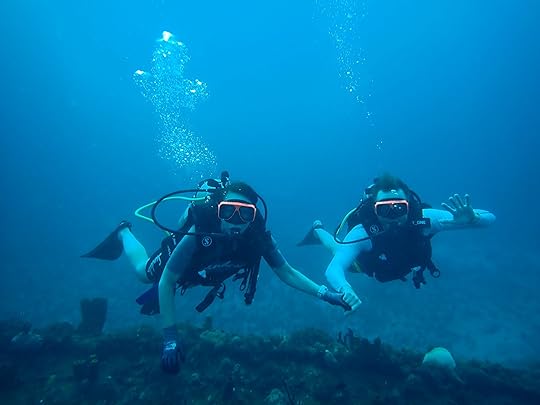
In love . . . with diving. Photo: Melissa McGibbon
The land of Bob Marley was one of the places on our wishlist, and staying at new hotels is always exciting, so we booked our stay at Sandals Dunn’s River. The resort is a relatively short flight for most Americans. If you live on the West Coast, you can leave your home in the morning and be sipping cocktails in paradise by dinnertime; if you live on the East Coast, you can be there by lunchtime. The new OCJ Airport is a 30-minute drive from the resort. When we drove through the gates at Dunn’s River, we were immediately impressed by the sense of arrival. The palm trees were lit up, the paths well-manicured, and the air warm and salty. We were greeted in the Lapidus Lounge with Jamaican rum cocktails and introduced to our butler, who delivered us to our swim-up suite. Everything was crisp and clean. Chilled champagne and a large soaking tub filled with steamy water and fresh flower petals ready for us made for an impressive welcome.
Admittedly, it was in part due to the coffee
Photo courtesy Sandals
The next morning (and each morning we were there), my partner and I took the 5-minute walk from our suite to Blum Cafe to get properly caffeinated with the freshly brewed Jamaican Blue Mountain Coffee, harvested and roasted exclusively for the resort. The coffee shop is a new upgrade for Sandals Resorts and features menu options like pour-overs and cold brews. The shop also has an assortment of sweet snacks and occasionally hosts chocolate tastings. After coffee, we went to the on-site dive shop to see about diving, but unfortunately, there was a red flag, which meant the wind was too strong for diving excursions that day. Plenty of other things were on our agenda, including a much-needed post-travel-day gym session. The fitness center is spacious, has all the latest equipment, and large floor-to-ceiling windows with dazzling views of the Caribbean.
Catching the vacation vibes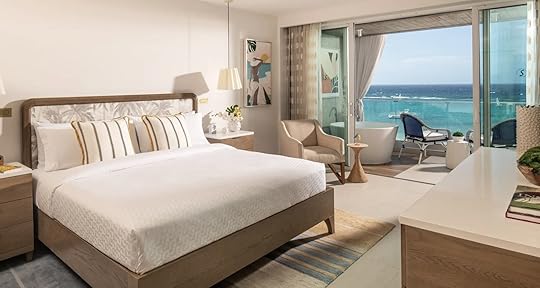
Photo courtesy Sandals
When we were done at the gym, we took a tour of the property—a perimeter check, if you will. We noticed the thoughtful touches, like water features that prevent too much noise from carrying and plenty of nooks and crannies for lounging privately or with groups. There are nine bars, including a swim-up bar and a stocked bar in every room, so you’re never more than a few feet away from grabbing a drink. The entire resort is designed for relaxation, and boy, did we do some hard-core relaxing. After a quick tour of the Red Lane Spa, we booked a couples massage and spent the afternoon maximizing our zen in the canopy cuddler lounge chairs by the spa pool.
Progressive meals, resort styleOne of the really lovely advantages of staying at an all-inclusive resort is that you can do fun things like progressive dinners since all the restaurants are steps away. There are 12 restaurants at Sandals Dunn’s River, and we were only staying for five nights, so we had to be strategic about trying all of them. The first night, we started with appetizers at the Cascata Italian Cucina, visited Zuka’s for some Latin Fusion entrees, and ended at the Dunn’s Rum Club for after-dinner drinks. At some all-inclusive resorts, the quality of food and service suffers due to the nature of the business model, but at this resort, the food was very good, so good that I’m still daydreaming about the hot and sour Thai soup we had at Banyu. The only drawback is how easy it is to overindulge, but we had no regrets, and it’s safe to say we got our money’s worth.
Unlimited scuba diving – the main reason we cameWe were delighted to see a hoisted green flag on the beach on the third and fourth days, which meant we were a go for diving. The on-site PADI dive shop set us up with the necessary equipment, and we were on the dive boat with our instructors and fellow divers headed out to sea by mid-morning. One of the highlights was visiting the SS Kathryn Wreck, one of Jamaica’s most popular dive sites. The 140-foot 1950s steel minesweeper ship was purposely sunk by a dive operator in 1991 and rests about 50 feet below the surface. This is an exciting dive site for novices and veterans alike because it offers a unique opportunity to access the ship’s interior without requiring advanced skills, and there are opportunities to see stingrays, lobsters, eels, and nurse sharks. The neighboring coral mazes and caverns offer swim-throughs and swirling reef formations. We didn’t have any luck spotting seahorses, but we saw many tropical fish, including parrot fish, puffers, moray eels, butterfly fish, trumpetfish, groupers, snappers, and colorful sponges.
Relaxing (and reggae, of course)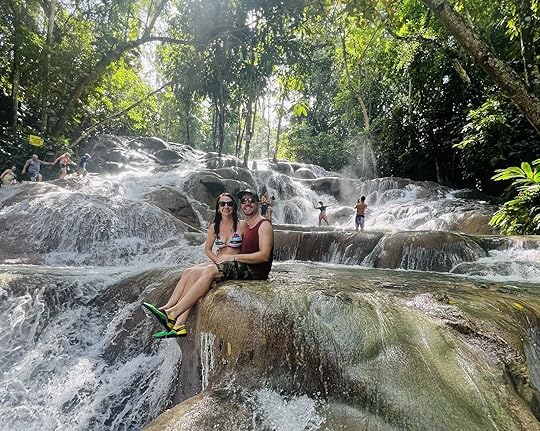
Photo courtesy Melissa McGibbon
After our dives and daily visits to the Jamaican Jerk Shack, we made time to lounge at the pool and hot tubs. I say “made time” because we had to be intentional about it. There are so many exciting things to keep you entertained that you have to make a point of really relaxing. We discovered Dirty Banana cocktails at the swim-up bar, and I’m a bit upset I’ve gone my whole life without knowing about them. They are made with Jamaican rum, Kahlua, bananas, and chocolate syrup and are very quaffable. Basking in the sunshine, drinking Dirty Bananas, and listening to Bob Marley croon over the speakers felt peak vacation.
In addition to unlimited diving and golfing, Dunn’s River Resort offers nearly 40 featured tours. We didn’t want to miss , the hotel’s namesake, so we booked a half-day tour there on our last full day. It’s just two and a half miles from the resort and is one of Jamaica’s coolest attractions. Dunn’s River Falls is a 600-foot waterfall with several small dome-shaped falls that eventually flows into the Caribbean Sea. Visitors on group tours join hands and ascend the series of natural pools to the top, where a massive waterfall cascades down into the top lagoon.
After visiting Dunn’s River Falls, we went for another gym session and then to the spa pool and hot tub again. Who goes to the gym on vacation? We do. It’s an exceptionally nice gym, and we had some all-inclusive calories to burn off. In the evening, we visited the restaurants and lounges we hadn’t made it to yet and then took advantage of the guided stargazing at the Coyaba Sky Rondoval Villas. Before we departed the following day, we managed to squeeze in some time at the beach and say goodbye to the friendly staff who took such good care of us during the week.
Our trip to Sandal’s Dunn’s River changed our minds about all-inclusive stays. Because gratuities are included with stays, we didn’t have to worry about pulling out our wallets for every meal or activity. It’s remarkable how liberating it was to park our pocketbooks while traveling. The effortlessness of this trip is now the bar for future trips, and we plan to return as soon as possible. 
Removing Dams From the Klamath River Is the Latest Win for Salmon – and Momentum Is Growing
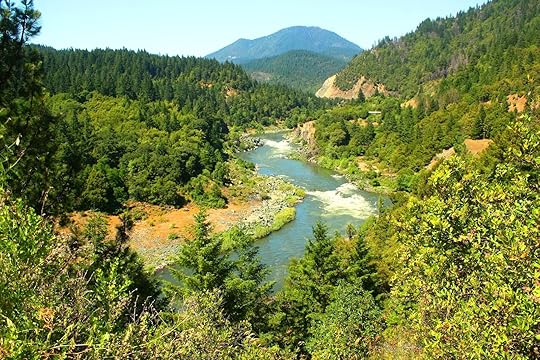
The Klamath River traverses 257 miles from Klamath Lake in Oregon to its mouth in California’s Redwood Coast. The salmon habitat the river supports, however, crosses more than 420 miles through the Klamath’s tributaries, historically one of the most significant salmon runs in the western United States and a primary source of food for the Yurok people for centuries. Throughout the first half of the 20th century, and culminating in the 1960s, a series of hydropower dams were erected along the river, cutting off the salmon runs and devastating the traditions and livelihood of the Indigenous peoples who had depended on the salmon for so long. Now, in a striking reversal of the trend from a century ago, the dams on the Klamath are gone – and for the first time in 100 years, the salmon can retreat to the breeding grounds that have given life to the Pacific Northwest since before humankind first entered the region some 10,000 years ago.
What’s more, the Klamath is hardly alone. Similar efforts are underway from the Snake River in Idaho to the Penobscot River in Maine, with one striking factor in common: Though dam removal efforts are complex, they’ve proven in many cases to be less controversial than the erection of the dams in the first place. Rather, few conservation-related efforts have proven more effective at uniting Indigenous peoples with politicians, business leaders, and outdoor recreationists across the political aisle and the broad spectrum of activities taking place on the water. Travelers have an important role in dam removal efforts, too – and it all comes down to where the money’s coming from. Nearly all major dammed rivers in the United States host commercial rafting and fishing outfitters, with both permitted and unpermitted stretches of water open to use for private parties as well. By supporting the outfitters running the rivers, obtaining a rafting or camping permit, or buying a fishing license, those visiting the river are casting their support for the long-term health of the ecosystem they’re visiting.
This goes to show that there’s never been a better time to plan a river trip – but before heading out, it’s important to have a general understanding of what’s happening and why it’s so important.
Why is this dam removal happening, and why is it important?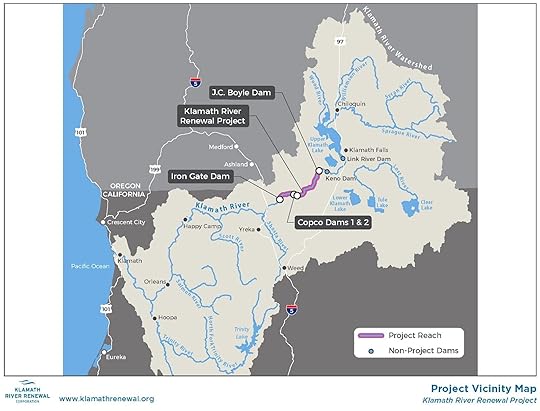
Photo courtesy Klamath River Renewal Project
The decision to remove a dam on a major river like the Klamath is often multifaceted, involving careful consideration of environmental, economic, and cultural factors. Not least is that these dams generate hydroelectric power, which is then sent into the grid and used to power homes, businesses, and the economy at large. Removing a dam means removing its power generation output, which then must be offset somewhere else (the federal government just announced an increase in acreage available for solar projects on public lands, as one potential solution).
Environmental concerns, such as habitat destruction and fish migration disruption, often drive dam removal efforts. Restoring fish populations – primarily salmon, in the case of the Klamath – can benefit commercial and recreational fishing industries, while improving water quality can positively impact agriculture and tourism. Cultural considerations, particularly for Native American tribes, play a significant role as dam removal can restore ancestral lands and protect cultural heritage.
“I think in September, we may have some Chinook salmon and steelhead moseying upstream and checking things out for the first time in over 60 years,” Bob Pagliuco, NOAA marine habitat resource specialist, said in an article released by NOAA. “Based on what I’ve seen and what I know these fish can do, I think they will start occupying these habitats immediately. There won’t be any great numbers at first, but within several generations—10 to 15 years—new populations will be established.”
The removal of the dams on the Klamath River is the culmination of years – decades, even – of effort on the part of Native tribes, environmental activists, fishermen, and politicians. There has been a growing public awareness of the negative impacts of dams and a shift towards more sustainable and environmentally friendly practices in recent decades, thanks largely to efforts from Indigenous communities and non-profit advocacy groups. The removal of the Klamath River dams is a significant milestone in this movement, as it is one of the largest dam removal projects in US history. It is expected to serve as a model for other river restoration efforts across the country.
What rivers can I visit to support these conservation efforts?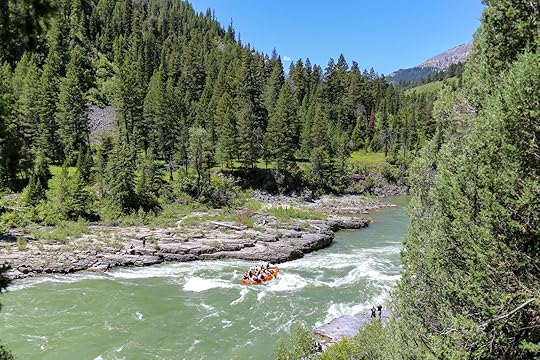
Photo: CSNafzger /Shutterstock
Traveling for a river trip to make a positive impact is one of the most effective ways the general public can support these efforts while learning about the surrounding ecosystem – and having a heck of time while doing it. A few rivers (and outfitters that run them) are:
Snake and Salmon Rivers: Located in the Pacific Northwest, the Snake and Salmon Rivers, particularly the Snake, have been a focal point for dam removal discussion. OARS operates many trips annually on each (be sure to include the stunningly beautiful Hell’s Canyon in any trip you take).
Penobscot River: This river in Maine has seen a series of dam removals in recent years, aimed at improving fish passage and restoring the river’s ecosystem. The Penobscot River Restoration Trust has been instrumental in these efforts. Northern Outdoors runs frequent trips down the river.
Elwha River: In Washington state, the Elwha River has experienced one of the largest dam removal projects in US history. Both the Elwha Dam and the Glines Canyon Dam were removed, resulting in significant improvements to the river’s health and the return of salmon populations. Check with Olympic Peninsula, the local destination marketing organization, for outfitters running the river before you visit.
American River: This river in California has been the subject of dam removal proposals, particularly in the context of restoring salmon habitat and improving water quality. However, these efforts have faced challenges due to the complex issues surrounding water rights and hydroelectric power generation. OARS runs the American, as do several local rafting outfitters.
Traveling with outfitters like OARS, which contributes proceeds to conservation efforts on the rivers it runs, is essential. If traveling with a group of friends on a private expedition, be sure to research any permits you’ll need to float or camp in the area. If you can’t visit in person, several non-profit groups also support river restoration across the United States, including American Rivers and the Western Rivers Conservancy. 
A California Bear Was Killed Due to Irresponsible Camper Behavior, and Locals Want Justice

Irresponsible tourist behavior is nothing new when it comes to wildlife, but a recent controversy has particularly touched a nerve. The August 22 killing of an adult male bear known as Victor in Northern California has many wildlife and environmentalists saying enough is enough when it comes to giving visitors a pass — especially when bears pay the price.
In late August, the Mammoth Lake Police Department announced that the California Department of Fish and Wildlife (CDFW) trapped and euthanized Victor the bear. The killing followed an incident on August 21, during which Victor swiped at a camper near the town’s popular Lake Mary, causing deep cuts to her leg. Victor was a frequent visitor to the campground, where he often scavenger for food left behind by campers. On a previous encounter earlier in the month, Victor swiped at a different camper attempting to take a bear selfie, causing minor injuries. But after the August 21 incident, CDFW determined that the bear “had become habituated to human sources of food,” and was “deemed a threat to public safety and was euthanized.”
But it’s not quite so clean cut, and now, many locals and Californians are saying that Victor the bear did nothing wrong — and that the camper should face legal action.
View this post on InstagramA post shared by Matador Network (@matadornetwork)
Following the incident, Mammoth Lakes resident and former wildlife officer Steve Searles posted two items on Facebook: a heartbreaking photo showing the bear’s body next to its unmarked grave near a local dump (warning: the photo is graphic), and a video that appear to show the woman not taking proper action to protect herself. Searles, known as the “bear whisperer,” also shared that he had interviewed other parties in the campground, who reported the woman and her friends had been intentionally leaving food out every night to bait Victor into visiting their campsite to film him. If that was true, it would be a violation of at least four regulations regarding black bears, including “practicing safe food storage,” “keeping a clean camp,” “securing all trash,” and “no bear selfies.”
In the video posted by Searles and shared widely on social media, it appears that the woman did not react properly when she allowed Victor to get close, failing to make noise, stand with the rest of her group, or slowly back away. Additionally, she should not have allowed Victor — who was slowly walking through camp, not running — to get within 100 yards of her to begin with. In the video, it appears as if the woman is just watching Victor as he approaches, holding her cell phone to her chest as her friends filming nearby laugh and joke. The release of the video caused outrage among Victor’s beloved fans, as the CDFW announced that the woman had “attempted to escape the bear by standing on a stump.” She was also standing between Victor and the “bear box” — a metal storage container used for storing food that would have been known to Victor (and all other wildlife) to contain human food.

Black bears like Victor the bear, such as the one shown here, are common in the Sierra Nevada. Photo: Wirestock Creators/Shutterstock
The CDFW did not say the incident was Victor the bear’s fault, and included in the announcement was a note on how to properly act in bear country. Fines and citations for violating rules designed to protect bears in California vary depending on the land managers; California State Parks can fine visitors up to $1,000, while Yosemite National Park can slap violators with a $5,000 fine.
But no fines have been issued and locals are outraged, with nearly 40,000 signatures on a “Justice for Victor” petition started one week ago. Advocates for Victor and other bears of the Sierra Nevada say they want his death to lead to action, calling for both new policies on bear management and penalties for the campers who baited Victor and violated proper “Bear Aware” behavior. As of early September, the names of the woman and her fellow campers have not been released, though she has been identified as a 61-year-old woman from Los Angeles.
While Victor’s death remains heartbreaking for many, members of the local Bishop Paiute Tribe took action to give Victor the respect many say he still deserves. The tribe contacted CDFW to get permission to rebury Victor, removing him form the grave dug by CDFW and reburying him in a traditional ceremony on tribal land. The ceremony reportedly included songs and blessings to give Victor a traditional and respectful farewell. 
In the Canadian Rockies, Indigenous Experiences Lend a Powerful Perspective to Outdoor Adventures

Reporting for this story was done before the disastrous wildfires that started in late July — the largest fires in Jasper National Park in a century. The region relies on tourism, and a representative for the region shared that it will take time to understand the long-term impacts of the wildfires on the community and on the visitor economy. Recovery timelines will be different for every operator and business. Both the community and Alberta’s visitor economy will depend on a strong return of businesses, accommodation providers, services, experiences, and other essentials to re-establish the area as a pre-eminent tourism destination. Additionally, traveling sustainably is all the more important moving forward, and the region hopes that people will consider off-peak travel, leave no trace, discover Indigenous perspectives, and support local businesses.
In Alberta, Canada, tree-lined trails welcome hikers, bikers, and mountaineers heading to the high alpine. Sweeping lakes sparkle in the long, sun-filled days. Wildlife ranging from grizzly bears to wolverines roam vast national parks. All of these are signs that you’ve arrived in the Canadian Rocky Mountains, which many First Nations, Métis, and Inuit have called home for thousands of years.
Alberta’s slice of the Canadian Rockies is an ideal destination for travelers seeking outdoor adventure that’s rich in Indigenous culture and history. It encompasses both Banff, Canada’s first national park, and Jasper, an area that served as a significant cultural crossroads for Indigenous peoples before becoming the site of the largest national park in Canada’s formidable Rocky Mountains.
From Banff to Jasper and beyond, exploring Alberta’s Rockies with the area’s original guides lends a power perspective to a region that’s solidified itself as a giant among wilderness destinations. Consider visiting between late spring and early fall, and join these Indigenous-led excursions to enrich your outdoor adventures in Alberta.
Indigenous-led experiences in Banff National ParkTake a medicine walk with Mahikan Trails
Photo: Nancy Besharah
The word “pond” does little to convey the grandeur of Cascade Ponds, a series of glassy ponds in Banff National Park that’s surrounded by grassy fields and backdropped by towering mountains. Mahikan Trails hosts medicine walks there that do a better job of showcasing the area’s beauty, as well as its cultural significance.
The medicine walks start with a lesson on the practice of laying tobacco before setting out on the trail with a knowledgeable guide. Throughout the walk, you’ll gain insights into the area’s history and the many uses of its trees, plants, and shrubs — sustaining and nourishing life, disinfecting water, and serving as medicine to treat wounds, to name a few. The whole excursion lasts about two hours and covers around one mile at a relaxed pace, with plenty of opportunities to stop along the trail.
E-bike through Indigenous cultural history
Photo: UpFilms/Shutterstock (left) + Photo: Nancy Besharah (right)
Iinisskimmaakii, or Buffalo Stone Woman, uses the phrase “Indige-scape” to describe her guided tours, like the e-bike experience in Banff National Park. The tour runs in partnership with Bikescape, an e-bike tour company in Banff. Bikescape provides the e-bike rentals, helmets, and anything else you might need on the casual two- to three-hour ride, which covers approximately 10 miles. Along the way, you’ll absorb Iinisskimmaakii’s Indigenous teachings, participate in a traditional smudge ceremony, and enhance your understanding of this area’s significance to its original inhabitants. Basic bike-riding skills are required for this activity.
Where to eat and stay in BanffJuniper BistroView this post on InstagramA post shared by Juniper Hotel & Bistro – Banff (@juniperbanff)
The Juniper Hotel, where the Juniper Bistro is located, sits on an archeological site that’s been a meeting place for humans for over 11,000 years. Creative, regional, and made-from-scratch meals (there’s no microwave in the kitchen) are the foundation of the bistro’s nature-positive, plant-rich menu. Dishes feature local ingredients like baby kale and animal proteins from family-owned businesses. Begin your meal with a selection of seasonal vegan nibbles or a regional charcuterie board along with a craft cocktail — and soak up the panoramic mountain views that people have been appreciating for thousands of years.
Juniper Bistro: 1 Juniper Way Unit 2, Banff, AB T1L 1E1, Canada
Fairmont Banff Springs
Photo: LisaBourgeault/Shuttertock
Referred to as Canada’s “Castle in the Rockies,” Banff Springs has been hosting guests since 1888. For the most luxurious experience, stay on the Gold Floor at the Fairmont Banff Springs — and, when you’re not out exploring the park, dedicate your free time to sumptuous spa treatments, plates of fine Alberta beef from the on-site steakhouse, and rounds of golf at the resort’s 27-hole championship course.
Fairmont Banff Springs: 405 Spray Ave, Banff, AB T1L 1J4, Canada
Moose Hotel & SuitesView this post on InstagramA post shared by Moose Hotel and Suites (@moosehotelandsuites)
Spacious, clean, and modern guest rooms make the Moose Hotel & Suites a solid mid-range choice in Banff. The hotel is equipped with all the standard amenities plus a few fun extras, including an on-site spa, Italian restaurant, and Tesla chargers in the first-come, first-serve parking lot. The rooftop hot tubs are the perfect place to relax and soak up the views of Cascade Mountain after an adventure-filled day. For anything else you might need, you’re just a few steps away from downtown Banff.
Moose Hotel & Suites: 345 Banff Ave, Banff, AB T1L 1H8, Canada
Indigenous-led experiences in Jasper National ParkSee the Columbia Icefield with Zuc’min Guiding
Photo: Massi Arezki
/Shuttertock
Continue your exploration of Alberta’s Rockies with Zuc’min Guiding on an Indigenous-led interpretive tour of the highly dynamic Athabasca Glacier, one of six large glaciers in the Columbia Icefield. You’ll cover about three miles on the glacier, walking alongside meltwater carving through the ancient ice and stopping to peer into deep, dark crevasses. On the three-hour tour, discover more about the icefield and the historical and current significance of the region from an Indigenous perspective. You can order a snack or meal at the Columbia Icefield Discovery Centre before or after embarking on the tour with Zuc’min Guiding.
Join the Warrior Women at Tekarra Lodge
Photo: Nancy Besharah
Warrior Women is an Indigenous- and women-owned collective that stages fireside chats and other cultural events around Jasper. One such locale is Tekarra Lodge, located a little over an hour by car from the Columbia Icefield. Swing by the lodge on Sunday summer evenings (June through August) to listen as the Warrior Women share Indigenous stories, songs, and drumming around an outdoor fire pit.
Where to eat and stay JasperTekarra LodgeView this post on InstagramA post shared by Tekarra Lodge (@tekarralodge)
Tekarra Lodge has two types of accommodation: a set of adults-only rooms in the main lodge and a collection of cabins where families of two to six people are welcome, including pets. Before the Warrior Women experience — or any time, really — make a reservation to dine at the on-site Tekarra Restaurant, which focuses on locally sourced and sustainable ingredients. Prime cuts of Alberta beef, wild game, and vegetarian offerings populate the dinner menu. Start your meal with the farmhouse or Alberta tomato salad — both are delicious.
Tekarra Lodge: Highway 93A South, Jasper, AB T0E 1E0, Canada
Fairmont Jasper Park Lodge
Photo: Jakapong Paoprapat/Shutterstock
Located lakeside with a heated outdoor pool, the 700-acre Fairmont Jasper Park Lodge is one of the finest places to stay in Jasper. Choose between chalet-inspired rooms, suites, and cabins, and enjoy million-dollar views of the snowy Rockies and beautiful Beauvert Lake. Be sure to make good use of the spa while you’re a guest, whether that means coming down for a massage or ordering a spa kit to your room.
Fairmont Jasper Park Lodge: 1 Old Lodge Rd, Jasper, AB T0E 1E0, Canada
Jasper Inn & SuitesView this post on InstagramA post shared by Jasper Inn & Suites (@jasperinnandsuites)
The conveniently located Jasper Inn & Suites is a popular mid-range option for park visitors. It offers a variety of accommodations (up to two-bedroom suites) and covers all the basics — there’s free parking, a pool, and an on-site restaurant where you can grab breakfast or dinner. But the best part? Jasper Inn & Suites is pet-friendly, so feel free to bring your pooch.
Jasper Inn & Suites: 98 Geikie St, Jasper, AB T0E 1E0, Canada
Indigenous-led experiences in NordeggHave a heli-alpine camp experience
Photo: Nancy Besharah
Nordegg is a small settlement in the foothills of the Canadian Rockies. It’s a two-hour drive from Banff and a three-hour drive from Calgary. It’s also a gateway to one of the coolest Indigenous-led outdoor experiences you can have in Alberta: a multi-day heli-alpine adventure with Girth Hitch Guiding and Zuc’min Guiding.
The adventure starts when you meet your guides and get outfitted with your outdoor gear. The heli-alpine camp is all-inclusive, so it provides boots, climbing shoes, harnesses, and whatever else you need. You’ll also get Mountain Hardwear tents, sleeping bags, sleeping pads, cutlery, and an eating cup when you get to the Cline Tarns wilderness camp, which is located around 7,500 feet up. Of course, you should still come prepared — bring a 20- to 40-liter backpack with your adventure clothing and personal items, and remember to pack layers because mountain weather is unpredictable. (Note that moderate fitness is required for this activity.)

Photo: Nancy Besharah
When it comes time for the excursion, you’ll depart from Rockies Heli Canada in Clearwater County on a breathtaking 20-minute flight from the heliport near Abraham Lake. You’ll soar high above rugged mountains dotted with glacial lakes, and rivers rushing along distant valley bottoms, before touching down at the Cline Tarns. There, you’ll unpack your gear and explore before settling into a hammock or taking a cold plunge in one of the adjacent lakes.
The alpine adventure also includes opportunities for 5.7 to 5.10 dolomite climbing and summiting 11,000-foot Mount Cline. The entire experience will enhance your alpine skills, get you better acquainted with the area, and offer more insights into the history and culture of the Rockies’ original inhabitants. The flight back to the Rockies Heli Canada base is a perfect opportunity to capture some final aerial footage and photos of the routes you explored in the incredible Cline alpine theater.
Where to eat and stay in NordeggAurum LodgeView this post on InstagramA post shared by Aurum Lodge (@aurumlodge)
Overlooking Abraham Lake, surrounded by forests and rugged mountains, the family-owned Aurum Lodge is an eco-tourism property that was planned, built, and operates with minimal environmental impact. Choose to stay in a B&B guest room in the main lodge or in a self-contained, pet-friendly unit with a kitchen. The lodge’s breakfast menu includes shakshuka, eggs Benedict, and a hearty and delicious French-style croque madame breakfast sandwich. Optional evening meals are served in the dining room or on the outdoor patio.
Aurum Lodge: 374021, AB-11, Cline River, Nordegg, AB T0M 2H0, Canada
How to get to and around Alberta
Photo: JulieK2/Shutterstock
For North American travelers, getting to Alberta is easy: The province’s largest airport, Calgary International Airport (YYC) serves 18 million passengers annually and provides access to more than 80 destinations worldwide. It’s located 10.6 miles from downtown Calgary and 90 miles from Banff.
At the end of your Indigenous adventure experience, you can drive about four hours from Jasper to Edmonton International Airport (YEG), the closest airport to Jasper by about 60 miles, or back to Calgary. YEG offers nonstop service to more than 50 domestic and international destinations, but renting a vehicle at YYC is the most convenient way to get around when exploring the Canadian Rockies.
Where to stay when you arrive or before you leave Alberta
Photo: Jeff Whyte
/Shutterstock
Before traveling from Calgary to Banff or flying home from YYC, stay at Grey Eagle Resort and Casino on the Tsuut’ina Nation. Dine at the resort’s Little Chief restaurant, named after a powerful warrior, great chief, and the older brother of Chiila (Bullhead) who signed Peace Treaty Number 7 with Canada on behalf of the Tsuut’ina Nation in 1877. There, Chef Brandon Dashnay’s Indigenous-inspired dinner menu features dishes like the Indian Taco, made with fry bread and spiced beef. Try the fry bread and oven-baked bannock, a bread that originated with Indigenous peoples, paired with local Peace River honey and the chef’s choice preserves.
Grey Eagle Resort and Casino: 3777 Grey Eagle Dr, Calgary, AB T3E 3X8, Canada 
In Buzzy Playa Del Carmen, Mexico, This Resort Stands Out for Wellness

As someone who travels multiple times a month, I often struggle to keep my balance when I’m away from home and end up feeling exhausted when I return. But if I’ve learned anything from recent wellness and spiritual journeys, including a trip to the Grand Hyatt Playa del Carmen in Mexico’s Riviera Maya, it’s the importance of consistency — especially when traveling.
While the Grand Hyatt Playa del Carmen provides ample opportunities to laze on the beach or by the pool with a beverage in hand, I found it effortless to stay active and connected to myself and my practices, whether through yoga, the Headspace meditations you can stream on the in-room TVs, or a simple morning walk on the beach. The resort has everything you need to nourish your mind and body, making it easy to stay grounded without sacrificing the decadence of a luxury vacation and return home recharged. Simply put, it’s a wellness-seekers haven.
The rooms at the Grand Hyatt Playa del Carmen
Photo: Grand Hyatt Playa del Carmen
My husband and I spent the week in a Swim Up King room and were pleasantly surprised. Some hotel reviews say it’s noisy and hard to relax at times, so before arrival, I wasn’t sure what to expect. But honestly, that was not a part of our experience.
The swim-up rooms, hidden in a quiet corner away from the main pools, offer an indulgent and peaceful way to start and end your day. Despite spending my mornings sipping coffee on the deck and evenings wading while watching the stars, I didn’t see one other person. It could have been that we visited in July, but even by the pool, we found it serene, calm, and a perfect place to focus on each other and ourselves.
Pricing varies by season, but you can enjoy swim-up rooms for around $375 per night in the low season or $575 per night in the high season. The property also offers a variety of other accommodations, including spacious oceanfront rooms and jungle-facing rooms with private plunge pools, so you can find the perfect fit for your travel style and budget.
Wellness activities at the Grand Hyatt Playa del CarmenThe one thing that amazed me about this property is the sheer number of opportunities for getting movement. If you want to, you can move your body from the moment you wake up to the second your head hits the pillow.
Sunrise yoga takes over the pool deck once a week, or you can book a yoga class within the spa. Those who love a heated class should opt for the spa classes, as the natural humidity of the pools makes them reminiscent of a heated Vinyasa flow while still soaking up the natural light peeping in from the top of the cenote cover.
View this post on InstagramA post shared by Grand Hyatt Playa del Carmen (@grandhyattplaya)
Three times a day, the hotel team transforms the most elevated section of the lobby into an outdoor spin studio, Rola, with arguably the best spin studio views in the region. They pull the bikes out from a hidden closet and give participants headphones like a silent disco so that hotel guests aren’t disrupted by class music. People come to take classes from local celeb instructors at home, and often, these instructors make the vacation for visitors, too.
If non-stationary bikes are more your style, the hotel offers daily bike tours of Playa del Carmen, or you can take a bike out and explore solo. My five-foot frame was too short for the on-site bikes they offer daily bike tours on. Instead, after asking what we’d like to explore, the hotel’s tour guide created a walking tour to find the best aguas frescas in the area. The chilled fruit drinks were perfect for a hot day. In my opinion, the best option for aguas frescas in Playa del Carmen is La Purhepecha, which is about a 25-minute walk from the hotel; maracuya, or passion fruit, is my favorite.
View this post on InstagramA post shared by Grand Hyatt Playa del Carmen (@grandhyattplaya)
Back at the hotel, the activities calendar was packed daily with aerobics and water Zumba classes. I preferred this to the land-lover’s version of the popular dance class, as my two left feet were ideally hidden beneath the pool’s warm waters. The hotel also hosts guided kayaking tours that leave from the beach adjacent to the property a few times a week.
The best part about the wellness offers at Grand Hyatt Playa del Carmen is that nearly all these activities can be booked by anyone, not just guests. So, if you’re visiting Playa del Carmen and don’t want to interrupt your routine, you can still book an activity on the hotel’s website. You’ll also find day passes for the hotel pools, which have some of the best pool views in the city, right on the beach overlooking the azure Caribbean Sea.
The Cenote Spa at Grand Hyatt Playa del Carmen
Photo: Grand Hyatt Playa del Carmen
It’s not a vacation unless you hit the spa — that’s my motto. And you don’t want to miss the Cenote Spa at Grand Hyatt Playa del Carmen.
The spa’s centerpiece is a breathtaking replica of a cenote — the sacred natural pools cherished by the ancient Maya for their spiritual connection between the physical and divine. While nothing rivals the profound energy of an authentic cenote, this architectural masterpiece offers a serene, grounding experience that elevates your spa day.
View this post on InstagramA post shared by Grand Hyatt Playa del Carmen (@grandhyattplaya)
Massage cabins line the spa’s exterior, with floor-to-ceiling windows that invite lush vegetation inside, seamlessly blending nature with your bodywork experience. After your massage, head back to the cenote to unwind in the hot tub or soak up the sun by the lap pool. You can also order food to this pool to indulge in a full spa day without having to leave.
Those committed to their wellness routine may want to take a few laps in the pool to invigorate their bodies before relaxing. Adjacent to the spa, a fully equipped gym and Pilates studio offers everything you need for a pre-spa workout. I wasn’t that serious; instead, before my massage, I sipped on the minty iced tea offered in the resting space with hanging woven chairs and peaceful spa music.
The dining at Grand Hyatt Playa del CarmenView this post on InstagramA post shared by Grand Hyatt Playa del Carmen (@grandhyattplaya)
As with the other aspects of the Grand Hyatt Playa del Carmen, the on-site restaurants make it easy to stay healthy or indulge. The sushi restaurant, Sushi N Raw Bar, is the only one in town with ocean views. If you’re going the healthy route, build your own poke bowl. If you want to try something exciting, get the fire roll, filled with salmon and tuna and topped with sweet chili and soy. It arrives at your table engulfed in decorative flames for a vacation-worthy dramatic display.
The Grill, the property’s Kosher restaurant, offers an elevated dining experience with Kosher wine imported from Israel and a weekly Shabbat dinner that follows all customs. Try the beef carpaccio with black forest truffles or short rib taco bites to start, and choose from the perfectly prepared USDA cuts for your main.
View this post on InstagramA post shared by Grand Hyatt Playa del Carmen (@grandhyattplaya)
La Cocina, the hotel’s Mexican restaurant, stages a breakfast buffet each morning. The buffet includes an omelet station and some delicious chia seed pudding. On the other end of the spectrum, there’s a waffle bar and a make-your-own chilaquiles station. My husband and I took a guacamole class there, which the hotel organizes in the afternoon and can be booked online or with the front desk.
While you can stay all-inclusive at the Grand Hyatt Playa del Carmen, I recommend a standard stay, so you can walk around and try some restaurants downtown. The resort’s dining options cater to both options, though, offering an all-inclusive menu and an à la carte selection. From my experience, the specialty dishes and premium cuts of meat tend to be more elevated on the à la carte menu, making it well worth the extra splurge. You can also upgrade to a Club Level room to access the Grand Club for breakfast and afternoon happy hour snacks for the best of both worlds.
Exploring Playa del Carmen, Mexico
Photo: Elzbieta Sekowska/Shutterstock
For those on a spiritual and wellness journey, there’s so much more to Playa del Carmen than what’s right in town, so I’d recommend booking an excursion (or two) with Kaeru Private Tours. This locally owned tour company is the brainchild of Alejandra Gonzalez, a Mexican native who’s passionate about showing the real, natural, and spiritual side of this distinctive region and its culture.
While traveling with Gonzalez, just before a cool swim in a hidden cenote 45 minutes from downtown, I was lucky enough to receive a blessing from a shaman in the jungle and hike around the turquoise shores of Punta Laguna. We then visited a local Maya family for lunch. They shared their traditional way of living, teaching us about how they connect with the land, the animals, and the natural resources that we sometimes take for granted.
Gonzalez can also arrange experiences that bring you back to yourself while helping you connect with Mother Nature. Her favorites are a private cacao ceremony in a cave in Playa del Carmen or a traditional Mexican temazcal (sweat lodge) at a pristine lagoon near Tulum, just a short drive away. You can send Gonzalez a DM on Instagram to start dreaming up your ideal adventures based on your spiritual and wellness goals.
How to get to the Grand Hyatt Playa del Carmen
Photo: Grand Hyatt Playa del Carmen
One of the most magical things about Playa del Carmen is how easy it is to get to from nearly anywhere in North America. It’s conveniently nestled between two international airports: Cancún (CUN) and Tulum Airport (TQO), which opened to international flights earlier this year. It’s easier to get direct flights to Cancún, but because the Tulum airport is new, there have been a lot of flight promotions offered in recent months.
Since the Grand Hyatt Playa del Carmen is in the heart of the city and most excursions include transportation, there isn’t a need for a rental car. Book a hotel transfer via the front desk before departure, or book directly with a company like Amstar. 
September 2, 2024
10 Tips for Visiting Famous Scottish Castles Like a History Pro

Exploring the historic castles of Scotland is more than a popular tourist activity. It’s a way to learn about the country’s history, one steeped in fascinated legend and lore. These ancient fortresses, scattered across the dramatic Scottish landscape, are one of the best ways to explore tales of feuding clans, royal intrigue, and battles for power — all of which echo through stone walls and misty valleys even today, thanks to the dedicated efforts of preservationists and historians. Visiting Scottish castles is not just about ticking off tourist attractions, but about engaging with the stories and dramas that shaped the country.
Scotland is home to anywhere between 1,500 and 3,000 castles, depending on who you ask. In fact, here are so many that quite a large number are privately owned, run as hotels or luxury home rentals.

Glamis Castle, childhood home of the late Queen Elizabeth. Photo: Visit Scotland
It’s an impressive number, considering the size of the country, and reflects Scotland’s turbulent and conflict-filled history. Between the 11th and 18th centuries, the country was often embroiled in wars, including battles with England and internal clan disputes. Many of the now-famous Scottish castles served as defensive strongholds designed to protect the land and assert dominance over would-be invaders. The rugged and often inaccessible terrain of Scotland also meant that many regions developed independently, leading to a proliferation of castles across the landscape as local lords and chieftains sought to secure their own territories.
Today, castles are deeply woven into the national identity, symbolizing Scotland’s resilience, independence, and rich history. So if you’re planning a trip to Scotland, you’ll likely want to visit at least one or two famous Scottish castles. But castles are big, and if you’ve never visited one, you may not know exactly what to expect, where to go, or how much time spend there. To help make it a little easier to add a few famous Scottish castles to your Scotland slow travel itinerary, Matador Network got the scoop on how a true professional recommends visiting castles, and how you can make the most of your future visit. We asked Ross Blevins, Interpretative Events and Guiding Manager at Stirling Castle, for his insider knowledge.
This interview has been edited for length and clarity.

Stirling Castle. Photo: Visit Scotland
Matador Network: Is visiting castles a popular activity for Scotland visitors? Are there estimates on how many people visit Stirling Castle each year?Ross Blevins: Visiting castles and other heritage attractions is a hugely popular pastime. Stirling Castle receives over 500,000 visitors each year and is in our top three most-visited sites annually, with its rich history at the heart of Scotland’s story.
Matador Network: Are people usually well-prepared for castle tours? Are there any common concerns or problems you run into frequently on tours?The castle guided tours are well received by castle visitors and are important in helping to enhance the visitor experience. Visitors also have the opportunity to enjoy costumed performers and special events at key intervals throughout the year.

Many famous Scottish castles have multiple indoor museum and displays, providing plenty of draws, even if you aren’t interested in the castle itself. Photo: Visit Scotland
Matador Network: What do people usually want to learn about the most during castle visits? The history, the architecture, the legends…?Visitors have many interests when visiting Stirling Castle. Some come to admire its rich architecture and the views across to the Ochil Hills, which formed the backdrop to some of the most famous events in Scotland’s history. Others want to learn about the castle’s history and to discover the people and events that have shaped the castle’s past, such as Mary Queen of Scots, who lived there as a child. The palace apartments of her youth have been painstakingly recreated to transport visitors back in time. This includes a set of unicorn tapestries that were recreated in association with organizations, including The Met [(Metropolitan Museum of Art in NYC)], based on those believed to have once hung on the palace walls. Stirling is also home to a series of carved wooden ‘Stirling Heads,’ which feature characters from the castle’s past, and once adorned the ceiling but can now be seen in a specially created viewing gallery.
Matador Network: Do you recommend taking a tour, or visiting on your own? Is there a certain kind of visitor who may prefer each?Visitors are not required to take a guided tour. Tours are provided free of charge for those who wish to take one. Many visitors prefer to explore the castle at their own pace. Others hire an audio guide to help them get the most from the experience. Guide books can also be purchased to aid visitors as they explore the castle. There are also lots of interpretation signs around the castle, which provide lots of useful information to enhance the overall visit.
10 tips for visiting famous Scottish castles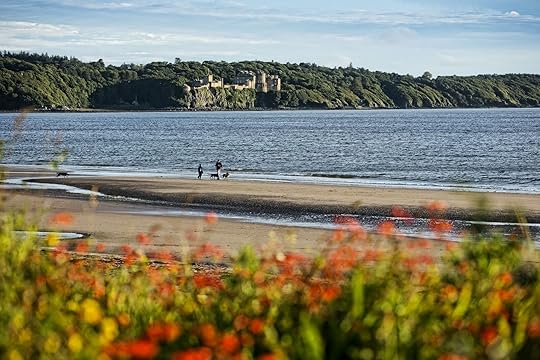
Visiting lesser known castles can be a great way to avoid crowds in crowded seasons — and learn about more specific parts of Scotland’s history. Photo: Visit Scotland/Paul Tomkins
Visiting castles can be a highlight of any trip, but to make the most of your experience, it’s important to plan ahead and approach each visit thoughtfully. Here are some specific tips for touring castles as a tourist:
Research the castle’s history: Before you visit, take some time to learn about the castle’s history. Understanding who built it, who lived there, and its role in history will enrich your experience and help you appreciate the details you see. It’ll also make it easier to understand the signage you’re reading or blurbs you’re hearing on the audio tour if you know just a little about the people and communities of the time.Go early or late: To avoid crowds and have a more personal experience, visit the most famous Scottish castles either early in the morning or later in the afternoon. This is especially important for popular sites like Edinburgh Castle, where peak hours can be quite busy. Be sure to check the castle’s hours in advance, though, as some may have limited hours or not be open every day in the off-season.Wear comfortable footwear: Castles often involve a lot of walking, including navigating uneven terrain, steep staircases, and cobblestone paths. Building standards in the 13th century weren’t exactly what they are today. Wear sturdy, comfortable shoes to ensure you can explore without discomfort. A good grip on your shoes is useful, too, especially since stone and grass can be quite slick after rain. And rainy days happen quite often in Scotland.
Photo: Visit Scotland/Kenny Lam
Check the guided tour schedule: Many castles offer guided tours led by knowledgeable guides who can provide insights and stories that you might miss on a self-guided visit. These tours often include access to areas not open to the general public. Sometimes, as with Stirling Castle, guided tours are free. At other properties, they may be only at set times, or require a different tier of admission ticket.You may want binoculars: Castles are often on hillsides with stunning views of valleys and mountains beyond. Sometimes, they may have scopes mounted for guests to use. So bringing a small pair of binoculars can help you get a good look at the landscapes around some of the most famous castles — and be a fun way to look around while you relax outdoors on a castle hillside with lunch or for a coffee break.Bring water: Some castles are in remote locations with limited access to food and drinks, and you’ll likely be doing a lot of walking. Bring a refillable water bottle, and maybe a snack or two, if you plan to stay a while.Check accessibility options: If you have mobility concerns, check in advance about the castle’s accessibility. Some castles have steep stairs, narrow passages, or long walks from parking areas, which may be challenging. Some castles have alternative pathways and modern additions to make visiting easier for mobility-challenged guests, but you may have to have a staff member show you where the ramps or elevator are, as you can’t exactly plop a modern elevator in the middle of a 600-year-old stone castle.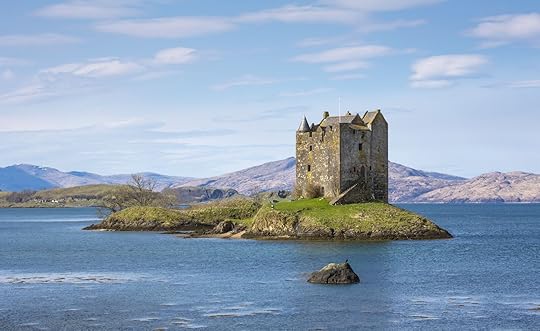
Photo: Visit Scotland
Visit lesser-known castles: While famous Scottish castles like Stirling and Edinburgh are must-sees, exploring lesser-known castles can offer a more intimate and unique experience. Castles like Craigievar or Castle Stalker are usually less crowded, but equally fascinating. Rural villages can be just as appealing as large cities like Glasgow.Plan for the weather: Scotland’s weather can be unpredictable and most castles include multiple buildings and various levels of courtyards and exposed pathways. Dress in layers, bring a waterproof and/or windproof jacket, and be prepared for sudden changes in weather, especially if you’re exploring ruins or castles with large outdoor areas.Respect preservation rules: Many castles are historic sites with delicate structures. Follow all guidelines for visitors, such as not touching artifacts, staying on marked paths, and respecting restricted areas to help preserve these sites for future generations. Even if a pathway looks sturdy enough to walk on, or a staircase looks like it ought to be open, don’t be a jerk. Historians and castle experts know where is and isn’t safe to go. Don’t trespass, as you’ll make more work for staff, potentially damage areas of historical significance, and just encourage other people to break rules put in place to protect important cultural sites. More like thisTravel7 Museums and Monuments in Edinburgh for Flying Hippos, Scottish Artworks, and Panoramic Views
More like thisTravel7 Museums and Monuments in Edinburgh for Flying Hippos, Scottish Artworks, and Panoramic Views
August 30, 2024
Why You Might See More and More Solar Panels on Your Trips Through Protected Federal Land

Solar power is poised to gain steam across the public lands of the American West, thanks to the recently updated Western Solar Plan. The plan ups the amount of acreage available for solar power development across the Bureau of Land Management (BLM) portfolio to 31 million acres, from the 22 million acres already in the original plan released in 2012. The increased acreage is part of the Biden administration’s Investing in America agenda, and is spread across five states – Montana, Idaho, Oregon, Washington, and Wyoming. Currently, the BLM has authorized solar production on public lands in Colorado, California, Arizona, New Mexico, Nevada, and Utah.
Two primary benefits will stem from increased solar development on BLM lands. First, it ups the total capacity of renewable energy produced on public lands, which fulfills a stated purpose to use public lands for “multiple purposes while conserving natural, historical, and cultural resources.” This can help the agency work towards the federal government’s goal to reduce US greenhouse gas emissions by at least 50 percent by 2030 and achieve a carbon pollution-free electricity sector by 2035, as outlined by the Department of the Interior. Currently, some 80 million acres of public lands are open to oil and gas development, and opening more to solar development brings the amount available for renewable energy production closer to even (though there’s still a long way to go to reach parity).
“The updated Western Solar Plan will help build modern, resilient energy infrastructure that creates a strong clean energy economy and protects our communities from the worsening impacts of climate change,” Principal Deputy Assistant Secretary for Land and Minerals Management Dr. Steve Feldgus said in a press release. “Through extensive planning and collaboration, we’re not only protecting our public lands but also ensuring that permitting for solar projects moves faster and more efficiently, avoiding conflicts and striking the right balance as we advance clean energy and safeguard the environment.”
The BLM already met its goal of producing 25 gigawatts of clean energy on US public lands earlier this year, and this slated increase in production should help the agency develop and reach a more ambitious goal.
Where solar farms are located now offers hints as to where future solar development will take place
Photo: photosoria/Shutterstock
According to a report from The Nature Conservancy, most of the development, if and when approved, will take place on public lands least fit for recreational or cultural conservation, and most likely to produce high quantities of solar power. This effectively means land without high concentrations of wildlfie or plants – such as deserts and other hot, arid zones – that would have the least impact on other uses of BLM land, like hunting, fishing, camping, and other forms of recreating. Given the location of current solar farms on BLM Land, expect approved projects to be accessible from highways but in vast areas of undisturbed space. This means that while it’s unlikely that a solar farm is going to pop up next to your favorite hiking trail or campground, one may be encountered further in the backcountry in areas accessible via backpacking or off-roading trips.
Possible development sites are vast. For example, 22 percent of Idaho is BLM land – and this land is spread across the state. That figure rises to nearly 30 percent of Montana and Wyoming. These states are widely arid and offer ample sunshine throughout the year. In Oregon and Washington, expect development on the eastern sides of the states, as, again, it’s arid and sunny there as opposed to the frequently rainy and overcast weather closer to the Pacific coast.
Currently, about 170,000 acres of solar development are active across BLM land in the western US. That’s a small fraction of what is allotted in the Western Solar Plan, so expect the amount of developed acreage to increase significantly in the coming years. You can actually view some of these projects, given that BLM land is open to the public – though some of them are not easy to reach. In California, the most prominent solar farms on BLM land are the Ivanpah Solar Electric Generating System and the Genesis Solar Energy Project. The Ivanpah Solar Electric Generating System is visible on I-15 between Los Angeles and Las Vegas. If you hike Clark Mountain or get up high on the dirt roads near the Stateline Wilderness, you can likely catch a good view of the project.
Some solar farms can also be viewed from nearby highways or designated viewing areas; for instance, the Genesis Solar Energy Project, east of Joshua Tree National Park, is visible from surrounding roads. In Nevada, the Copper Mountain facility is located near the Sloan Canyon National Conservation Area. Established trails here are rough and minimal, but if you do get out and up high you can see the panels on a clear day – though you could also just Highway 95 south of Henderson and Boulder City and look out the window. In Arizona, the Gila Bend Solar Park is just north of I-8 and east of the Painted Rocks Mountains. 
Matador Network's Blog
- Matador Network's profile
- 6 followers



